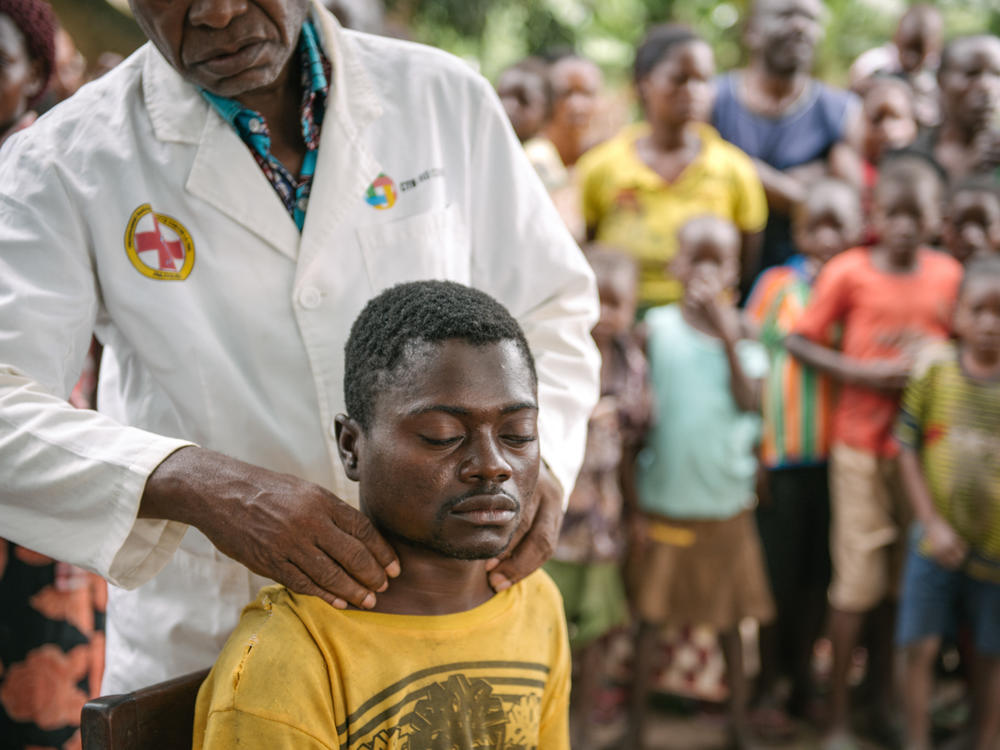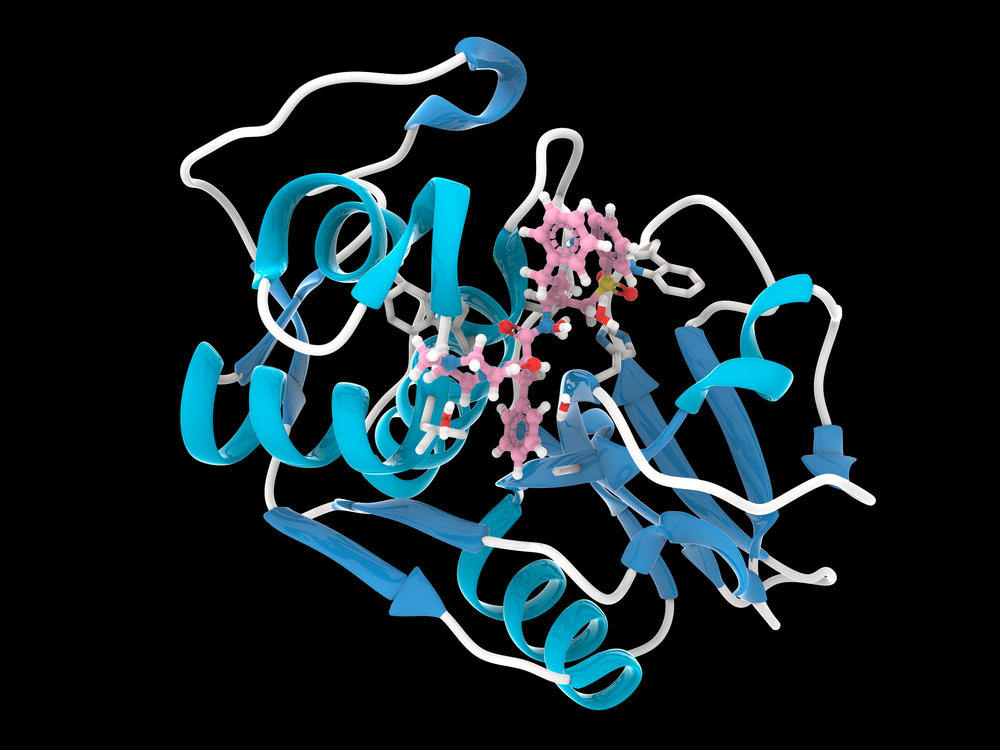Section Branding
Header Content
Treatment for acute sleeping sickness has been brutal — until now
Primary Content
Acute sleeping sickness – the treatment is almost as horrific as the disease.
But now there is encouraging news about an oral medication – one that's also been used for chronic sleeping sickness to great success.
Symptoms for both forms of sleeping sickness start with fever and aches. Then things get worse. The parasite that causes the disease will start to disrupt sleeping patterns and cause aggressiveness and psychosis – that's how it got its name.
For many years, therapy for both types would begin with a lumbar puncture to see if the parasite has invaded the central nervous system, followed by intravenous injections of a drug toxic to the kidneys and an arsenic-based drug that's toxic to the brain. Up to 10% of patients would die from the treatment alone. But left untreated, the acute form of sleeping sickness is almost always fatal.
Within the last decade, treatments for the chronic form have become much safer with the use of an oral drug called fexinidazole. But for the roughly 100 people a year who get the acute form, the risky injections were the only option.
Now the European Medicines Agency has given their "positive scientific opinion" on the use of fexinidazole for the treatment of acute sleeping sickness as well. That opinion is based on results from an ongoing clinical trial showing that a 10-day course of pills cures the disease in 97% of patients – and should lead to approval of the drug by countries outside of the EU.
A deadly parasite found in cattle and spread by flies
Both forms of sleeping sickness have always presented tremendous challenges to the medical profession. One of the big concerns is that it's not easy to diagnose. "It starts with very nonspecific symptoms" like weakness, dizziness, and weight loss, according to Dr. Olaf Valverde, clinical project leader for sleeping sickness at the Drugs for Neglected Diseases Initiative and a researcher who was part of the fexinidazole trials. He says that because doctors often just treat for the usual suspect for the symptoms: malaria.
How quickly the disease progresses depends on the variant. There's the gambiense variant of the parasite, which causes the chronic form. It's found in West and Central Africa, takes months to develop after infection and is responsible for 92% of all sleeping sickness cases, which are now down to under 1,000 per year.
Then there's the rhodesiense variant, which causes the acute form and is the subject of the new European Medicines Agency opinion. It's only found in East Africa, with most recent cases in Malawi. This less common form of sleeping sickness only takes weeks to fully develop.
Both parasites are spread by tsetse flies. The chronic form only circulates in humans, so the number of cases is relatively constant year after year, and surveillance programs can effectively track down and treat folks who are infected.
But the acute form has an animal reservoir, which makes surveillance a challenge. Experts know the rhodesiense parasite is always lurking in the animal population and has led to large outbreaks in the human population in the past.
Cattle are considered potential hosts for the parasite but currently it is "confined to game reserve areas," says Dr. Westain Nyirenda, director of health and social services for the Rumphi district of Malawi and principal investigator in the fexinidazole clinical trial.
Experts think that an outbreak of this acute form of sleeping sickness infected half a million people in 1900 and more recently "there were outbreaks in the late '80s, where in one year in Uganda, 8,000 people died," according to Dr. Christian Burri, deputy head of the Department of Medicine at the Swiss Tropical and Public Institute, who was not directly involved in the latest clinical trial. There were outbreaks in the '90s and 2000s as well.
So even though the number of sleeping sickness infections now seems low, the experts interviewed for this story are all concerned about the possibility of another outbreak – which is why there's been an emphasis on finding safe and effective drugs to treat acute sleeping sickness.
Using an old drug to treat an old disease
The clinical trials which the European Medicines Agency based their opinion on were independently conducted by Drugs for Neglected Diseases Initiative in collaboration with Sanofi, the company that makes the drug. The drug that was tested, fexinidazole, was actually developed back in the 1970s and has been used over the past decade to treat the chronic form of sleeping sickness.
The reason it took so long to test fexinidazole against the acute form of sleeping sickness is because there are so few cases. This latest trial only had 45 participants, but fexinidazole did cure the disease in 97% of patients.
"We noted one relapse and that is in the report," says Nyrienda. As a result, specialists in sleeping sickness say that the treatment involving injections "will still have to be there for backup."
There's hope for an even better solution on the horizon. Earlier this year, NPR reported on a single-dose oral drug that could cure the chronic form of sleeping sickness; that drug has not yet been tested against the acute form, though there are plans to do so soon.
Low cases and safe drugs doesn't mean the fight is over
The new treatment option has experts optimistic that the world can eliminate the chronic form of sleeping sickness. But because of the animal reservoir, Nyrienda says that total elimination of the acute form "might not be possible" and that future outbreaks are a real concern.
Other obstacles loom. For one thing, distribution of the medicine to remote areas is a major issue, as is diagnosis. Valverde says that often the sleeping sickness parasite would be discovered "in accidental findings on blood slides taken for malaria suspicion." The advent of rapid malaria diagnostics means those blood slides aren't being taken anymore, so new tests for sleeping sickness need to be developed.
Complacency is also a concern. According to Valverde. "The [fewer] cases you get, the more both the community health system and the international partners tend to think that the problem is solved. And this is not yet the case."
This is why Burri is worried that history could repeat itself. "In the mid-'60s, only a handful of cases existed after huge efforts by the French and the British colonial forces," he says. Then health-care priorities changed and cases from both parasites "came dramatically."
The hope is that fexinidazole will make a difference. Since it is safe and effective, unlike the prior treatment for acute sleeping sickness, people may be more willing to get treatment, lessening the impact of any future outbreak.
Still, Burri stresses that the fight is not over. "It's a disease that has shown more than once that it comes back if we look away," he says.
Valverde agrees. "We are in the last mile and the last mile is the most difficult."
Max Barnhart is a Ph.D. candidate and science journalist studying the evolution of heat-stress resistance in sunflowers at the University of Georgia.
Copyright 2024 NPR. To see more, visit https://www.npr.org.


